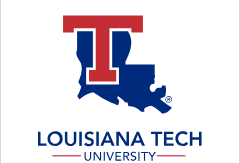Date of Award
Spring 5-24-2025
Document Type
Thesis
Degree Name
Master of Science (MS)
Department
Food Science
First Advisor
Simone Camel
Abstract
Eating disorders can cause a disturbance in how the health of food is viewed (Cerniglia et al., 2017). If a person has disturbances in their eating behaviors that can cause harm to their health, but the behaviors do not fit into the criteria of a specific eating disorder, they fall into the category of a disordered eating pattern (Academy of Nutrition and Dietetics, 2018). Because of the stress the college environment can cause students, some college students may cling to anything they can control, which may be reflected in their dietary habits. Orthorexia Nervosa (ON), a disordered eating pattern, is characterized as “a pathological obsession, fixation, or preoccupation with healthy foods” (Rogowska et al., 2021). Its prevalence measured by the Test of Orthorexia Nervosa – 17 (TON-17) averages 5.5% in the general public. A subpopulation at a higher risk for ON is nutrition and dietetic students attending college (Ephrem et al., 2024). The literature also has found that perfectionistic tendency has been linked to other mental disorders in the person's life, such as ON (Norvara et al., 2022). Some students are found to demonstrate outstanding academic performance far beyond that of their peers (Jeremy & Fisher, 2012). These students are referred to as high-achieving students. This type of student in literature have been found to be associated with a perfectionistic mindset (Bendit et al., 2023). This study was conducted to evaluate the relationship among Orthorexia Nervosa (ON) risk, Grade Point Average (GPA), perfectionism tendencies, and high academic achievement in Nutrition and Dietetics college students. This study collected data on the prevalence and relationship of these variables and analyzed the correlation among each variable. While previous research has been conducted on ON, this disordered eating pattern still requires research on its prevalence and risk factors. There is also research on the correlation between ON and perfectionism in Nutrition and Dietetics students, and there is research that links perfectionistic tendencies and high-achieving students; however, there is a lack of research on ON and high-achieving students. This study explored these relationships and their influence on those with ON. For this study, a cross-sectional design using an online questionnaire was conducted on adult undergraduate and graduate nutrition and dietetic students recruited via program directors. There were 49 emails sent from the beginning of August 2024 through November 2024. The eligibility for this study was individuals enrolled as food, nutrition, and/or dietetics students. This study used convenience sampling. The questionnaire included the TON-17, Almost Perfect Scale-Revised (APS-R), achievement prior to college and demographic items. The TON-17 and APS-R used 5-point and 7-point Likert scales respectively, with each measuring three subscales. The sample included 400 nutrition and dietetic students. The survey received 400 responses, of which 52 participants were removed due to not answering any questions after the consent and if less than 25% of the survey was completed. The final sample size for analysis was 348 responses. The sample was primarily female (83.2%) and white (68.5%), and the largest proportion was senior dietetic students (29.3%). The mean TON-17 was 45.40 (SD=10.46) and the mean GPA of 3.66 (SD=0.33). A high ON risk with a recommendation for further evaluation was found in 6.8% of the sample. The TON-17 score was found to increase as the APR-R Discrepancy subscale increased (r=.242), (p=< 0.01). Perceived perfection expectations of family were positively correlated with the TON-17, r(328)=.156, p=.005, and all 3 of its subscales. TON-17 scores negatively correlated with years of Nutrition and Dietetics curriculum study. Participants in the "referral" category had a significantly higher APS-R-Order score (M=24.59, SD=3.87) compared to those with scores not requiring referral (M=22.55, SD=4.03), t(1) = 330 p=.022. The results of this regression indicated that the four predictors explained 71.6% of the variance (R^2=.141, F(4,263) = 10.828 p=< .001). It was found that Current GPA significantly predicted ON tendencies (β=.189, p=< .001), as did Perceived Family Pressure (β=.153, p=< .013), so did the APS-R third subscale Discrepancy (β=.140, p=< .022), and APS-R second subscale Order (β=.189, p=< .001). This study evaluated ON risk, perfectionistic tendencies, and previous achievements in the relationship between these variables. It was found that nutrition and dietetic students have a higher prevalence of ON 6.8% than those reported in previous studies, 5.5% using the TON-17. The predictors of ON risk were found to be organization tendencies, maladaptive perfectionism, current GPA, and perceived family pressure for perfectionism. These findings highlight the need for screening for ON risk in nutrition and dietetic pre-professionals to address these biases before professional status is reached.
Recommended Citation
Owens, Sophia Grace, "" (2025). Thesis. 144.
https://digitalcommons.latech.edu/theses/144

